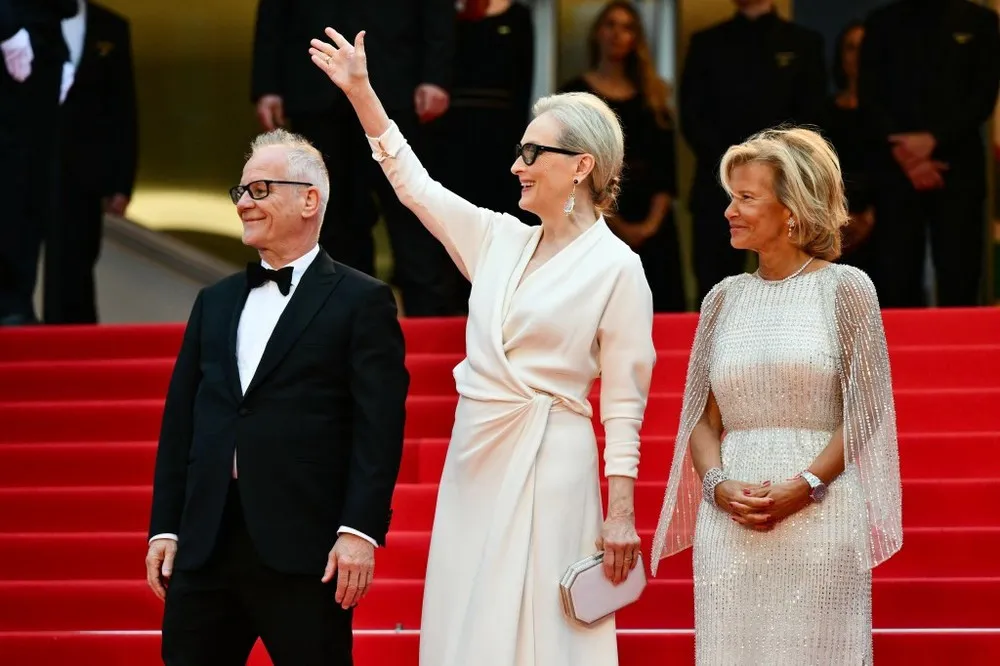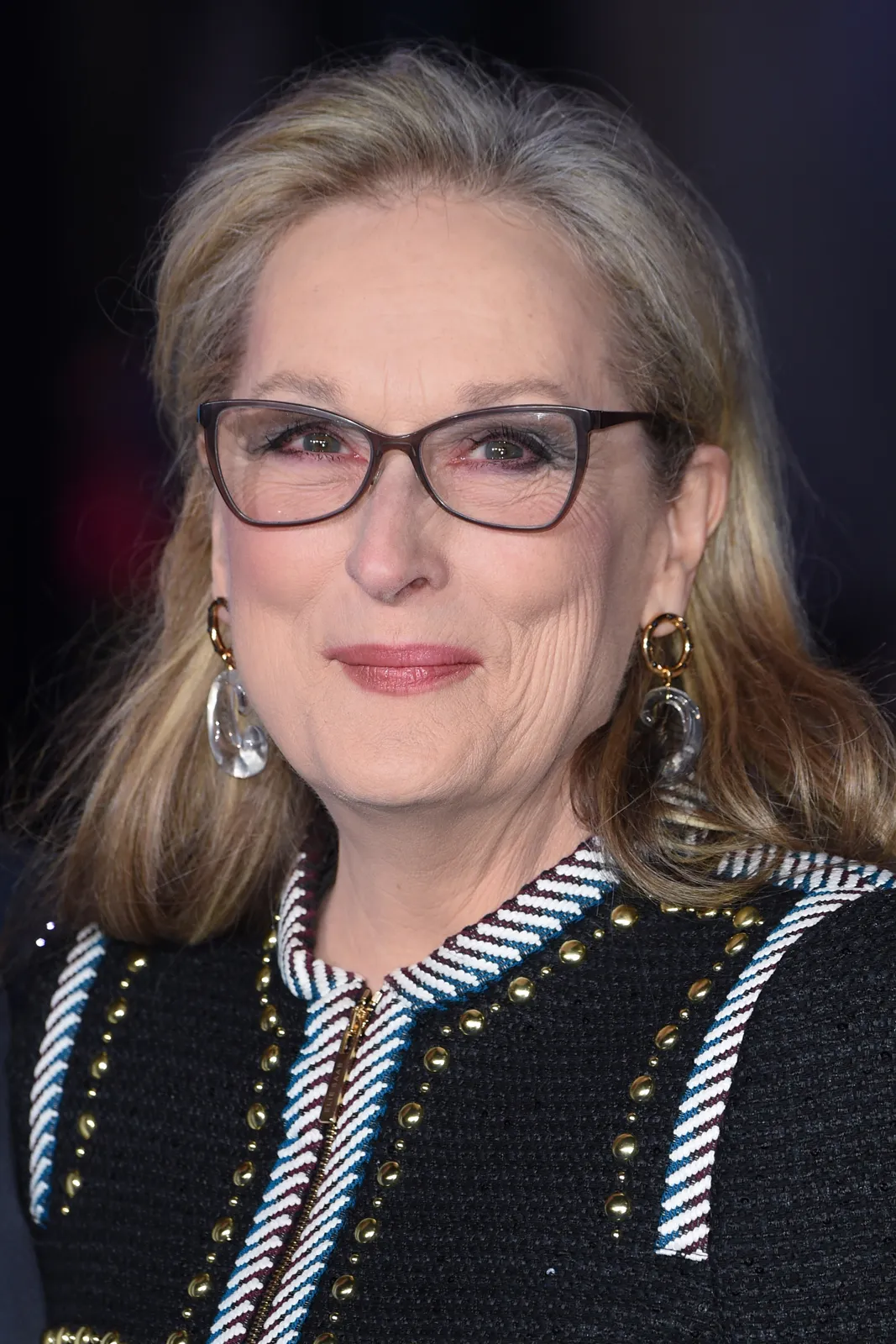
Meryl Streep: The Treasure of Cinema
Hollywood icon Meryl Streep once compelled a film crew to rewrite a script because the female character she portrayed was “too villainous.”
On May 14, the legendary actress received an Honorary Palme d’Or at the opening ceremony of the 2024 Cannes Film Festival. French star Juliette Binoche, who presented the award, hailed Streep as a “global treasure,” highlighting her memorable roles from Sophie’s Choice (1982) to Julie & Julia (2009). “She has transformed the way we see cinema,” Binoche said.

According to the biography Meryl Streep: Anatomy of an Actor (2014) by Karina Longworth, Streep’s roots are in theater. Born to a mother who was an artist and art editor, Streep displayed artistic talent early on, mimicking voices and memorizing lines effortlessly. She began voice training at 12 and acted in school plays, drawing attention in Miss Julie. Clinton J. Atkinson, her drama professor at Vassar, recalled, “I don’t think anyone ever taught Meryl how to act. She taught herself.”
After graduating, Streep pursued a Master of Fine Arts (MFA) at the Yale School of Drama. To pay for her education, she worked as a waitress while appearing in over a dozen stage productions. At one point, the artist’s workload led to a severe stomach ulcer. During that time, Streep considered abandoning acting to study law, but her passion for the arts prevailed. She earned her MFA from Yale in 1975 and received an honorary Doctor of Arts degree from Dartmouth College six years later.
For nearly five decades, Meryl Streep has been recognized as a global cinematic icon. In 1977, after years on Broadway, she made her film debut in Fred Zinnemann’s Julia (1977), appearing in a few scenes.
Despite the film launching her to stardom, Streep later expressed regret for her involvement in the project. “I had a really terrible wig, and they took dialogue from a scene with Jane Fonda and stuck it into my mouth in another scene. I made a terrible mistake. I hated the job,” Streep recounted in Meryl Streep: Anatomy of an Actor.
Streep’s career took a pivotal turn when actor Robert De Niro suggested she play Linda in the war film The Deer Hunter (1978). Her character is engaged to Nick (Christopher Walken) but falls in love with his best friend Michael (Robert De Niro). Her performance was widely praised. The Film Experience noted that Streep’s tenderness balanced the film’s masculine intensity, while critic Pauline Kael described her as “a true beauty” bringing freshness to the role. At the 1979 Oscars, Streep earned her first nomination for Best Supporting Actress, with the film winning five awards, including Best Picture.
Just a year after her nomination, Streep won her first Oscar for her role as Joanna in Kramer vs. Kramer (1979). Critic Roger Ebert praised her for convincingly portraying a troubled wife and mother who overcomes her challenges to rediscover herself.
Before accepting the role, Streep had considered turning it down if the film focused too heavily on the male lead. According to The Guardian, she believed the script portrayed the female character as “too villainous” and insisted on revising the role to better represent women in broken marriages. The producers agreed, allowing Streep to rewrite several lines, including passages that highlighted the resilience of mothers.
In 1982, Streep achieved major success with Sophie’s Choice, playing a Polish Holocaust survivor entangled in a love triangle with an aspiring writer, Stingo (Peter MacNicol), and an eccentric Jewish man, Nathan (Kevin Kline).
Streep’s emotionally charged performance received widespread acclaim. One of the film’s most memorable scenes is when Sophie must choose which of her two children will live. Time reported that Streep filmed the intense scene in one take and refused to redo it because of the emotional and physical toll it took on her. The Guardian’s Emma Brockes wrote, “Streep’s portrayal is both gripping and an extraordinary display of emotional depth.”
The role earned Streep numerous awards, including the 1983 Oscar for Best Actress. In 2006, Premiere magazine named Sophie one of the greatest film characters of all time.
Throughout her career, Streep has often sought roles with complex, strong characters. Medium highlighted that in every role, she demonstrates an unparalleled ability to convey deep emotions, whether playing a Victorian woman in The French Lieutenant’s Woman (1981), a factory worker in Silkwood (1983), or Danish writer Isak Dinesen in Out of Africa (1985). Her performance in A Cry in the Dark (1988) earned her Best Actress at the 1988 Cannes Film Festival and the New York Film Critics Circle Award. In the film, she portrayed Lindy Chamberlain, an Australian woman wrongfully accused of killing her child.
In the 1980s and 1990s, Streep attempted to reinvent her image with comedic roles, but these efforts were less successful. Films like Postcards from the Edge (1990), Death Becomes Her (1992), and The River Wild (1994) were met with mixed reviews. She then returned to dramatic roles that required greater technical skill, delivering memorable performances in The Bridges of Madison County (1995), Marvin’s Room (1996), One True Thing (1998), and The Hours (2002).

Streep has received 21 Oscar nominations, winning three times, and 33 Golden Globe nominations, with nine wins. Now in her 70s, she continues to star in major projects annually, including Little Women (2019), Let Them All Talk (2020), Don’t Look Up (2021), and most recently, the series Only Murders in the Building from 2023 to the present.
Beyond acting, Streep is known for her advocacy for women in the film industry. She serves as a spokesperson for the National Women’s History Museum in the U.S. In 2015, she announced that she was funding female screenwriters over 40. In 2018, she was among the founding members of the Time’s Up organization, dedicated to combating harassment and discrimination.
At a press conference before the 2024 Cannes Film Festival, artistic director Thierry Frémaux commented, “Meryl Streep is deeply aware of women’s issues in Hollywood and is committed to reflecting them in her work. With nearly 50 years of contributions to countless masterpieces, she is an integral part of our love for cinema.”



